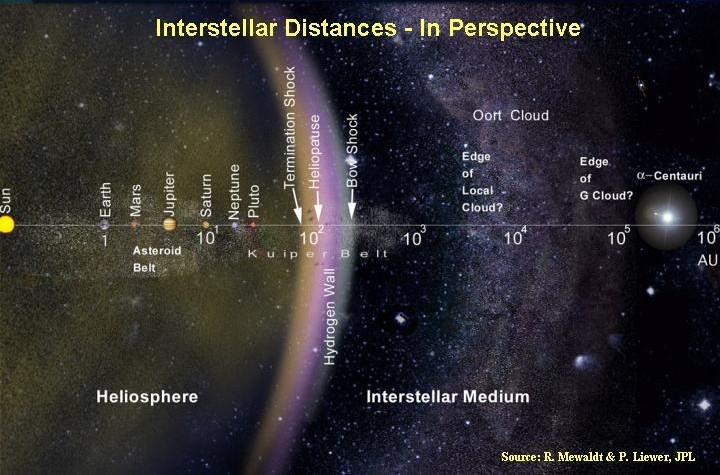interstellar distances

A simple model helps to give some idea of the extraordinary emptiness of interstellar space and the great gulfs that exist even between neighboring stars. Think of the Sun as a ball as wide as the dot over this 'i'. Earth would then be a microscopic speck about 2 centimeters away and Neptune a barely visible speck just 60 centimeters from the Sun. On this scale, the nearest star, Proxima Centauri, would be another tiny speck 1 kilometer in the distance. Alternatively, consider a hollow ball the size of Earth. A dozen oranges scattered at random within that immense volume would approximate the scale of the stars and the spaces between them in the vicinity of the Sun. To appreciate the problem that the vast interstellar spaces present to future star travelers, the table below shows how long it would take using various forms of transport to travel the distance from the Sun to Proxima Centauri – 4.28 light-years (1.31 parsecs), or approximately 40 trillion kilometers (25 trillion miles). See also interstellar travel.
| Travel times to Proxima Centauri | |||
|---|---|---|---|
| form of transport | speed (km/s) | distance traveled in 1 year (km) | time to Proxima (y) |
| foot | 0.0013 | 42,000 | 1,000,000,000 |
| car | 0.026 | 830,000 | 50,000,000 |
| Boeing 747 | 0.26 | 8,800,000 | 5,000,000 |
| Voyager 1 | 17 | 510,000,000 | 76,000 |
| light beam | 300,000 | 9,460,000,000,000 | 4.28 |


